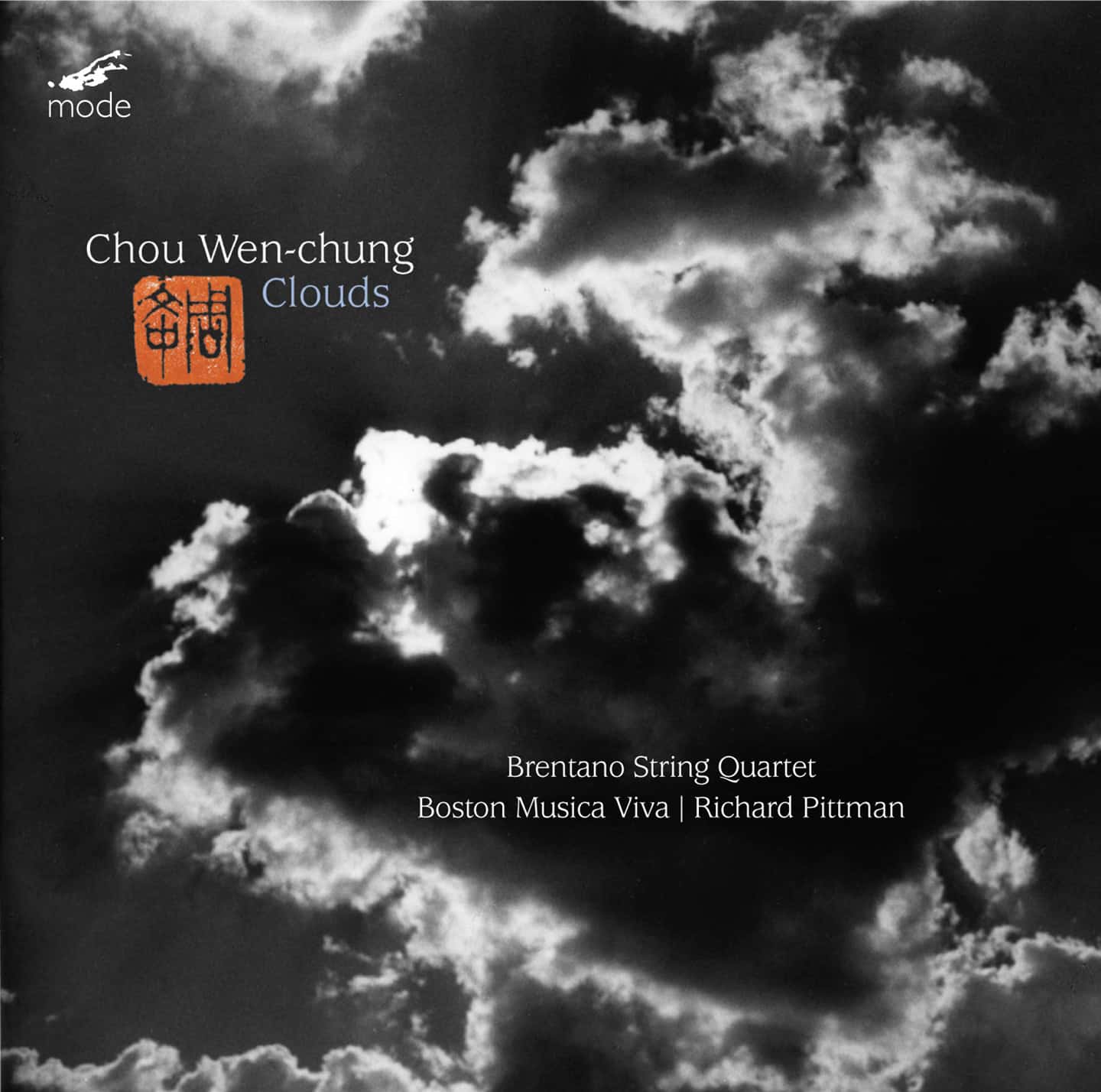String Quartet No.1 “Clouds” (1996)
I. Andante con moto 14:52
II. Leggierezza 2:26
III. Larghetto nostalgico 6:07
IV. Presto con fuoco 0:33
V. Andante con moto 7:35
String Quartet No.2 “Streams” (2003)
I. Introduction and Fugue (Contrapunctus Variabilis I) 5:29
II. Zhaohun (Contrapunctus Variabilis II) 4:13
III. Canonic Perpetual Motion (Contrapunctus Variabilis III) 1:42
IV. Episodes and Coda (Contrapunctus Variabilis IV) 6:59
The Brentano Quartet
Twilight Colors (2007) for double trio of woodwinds and strings
I. A Thread of Light (Contrapunctus Variabilis V) 6:12
II. Colors of Dawn (Contrapunctus Variabilis VI) 1:46
III. In the Mist (Contrapunctus Variabilis VII) 3:32
IV. Mountain Peaks Rising (Contrapunctus Variabilis VIII) 4:57
V. Coda: Their silhouettes neither parallel nor contrary (Contrapunctus Variabilis IX) 1:17
Boston Musica Viva
Richard Pittman, conductor
Chou Wen-Chung met Edgard Varèse in 1949. Chou became Varèse’s apprentice and a lifelong friend by assisting him in editing and revising his music, while sharing interests that included classical literature, sculpture, and geometric aspects of music. Chou later completed unfinished works by Varèse, including, “Nocturnal”. Unfortunately, Chou’s own music is less known, and Mode is pleased to release this CD of relatively recent works, deeply contemplative music for string quartet and double trio; not unlike Beethoven’s late string quartets.
Chou grew up in China. In 1946, he turned down a scholarship in architecture at Yale University in order to pursue music, studying with Nicholas Slonimsky, and with Edgard Varèse and Otto Luening in New York. In 1954, he became the first technical assistant at Columbia’s Electronic Music Laboratory, and concurrently appointed the director of Chinese music and drama. He has been a tireless champion of bridging Eastern and Western music and composers.
Chou developed compositional techniques for achieving what he calls the “re-merger” of Eastern and Western musical elements. This technique deals with the ancient Chinese concept that each single musical tone is capable of a wide range of expression by itself; as well as the creation of a musical correlate to the beauty of Asian calligraphic brushstrokes.
Regarding String Quartet No.1 “Clouds”, Chou comments that the title refers literally to “the quality shared by cloud formations and calligraphy: the continual process of change.”
String Quartet No.2 “Streams” can be seen as Chou’s homage to J. S. Bach’s “Art of Fugue” and an attempt to extend the traditional scope of fugal writing by constructing an elaborate contrapuntal system derived from Chinese theories of yin and yang. Mark Steinberg, the first violinist of the Brentano String Quartet, described the first String Quartet as a huge landscape compared to the second, which is more concentrated in having a specific route that it traverses: “it is not only an homage to Bach, but a complete absorption of what Bach is in another idiom.”
In Twilight Colors, Chou drew inspiration from the exceptional colors he witnessed of the changing sky over the Hudson River Valley at daybreak. He wished to capture the texture of the twilight sky with “its rich monochromatic hues and tranquility devoid of sharp contrasts” — achieved through subtle variations in timbre among the instruments, vertical structures which signify expansion, and linear structures signifying contraction in space.
Liner notes by Yayoi Uno Everett.

